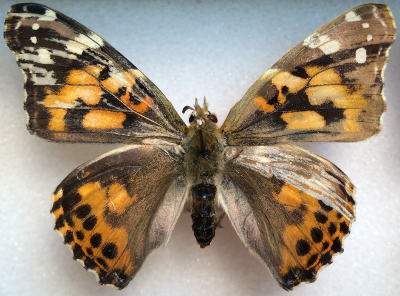River subbasins more depleted than
official figures show
09 April 2024
Published online 10 July 2016
Advanced understanding of gene development shows how butterflies can see a wider range of colours.

A closer look at how cells make random “stochastic” decisions to express genes within the cells that detect colours allowed a team of researchers in New York, Japan and the United Arab Emirates to understand how butterfly vision includes a wider range of colour sensitivity.
Colour is especially important to butterflies, which live in colourful environments and rely on rich wing patterns to recognize mates and for finding flowers.
Previous research on the fruit fly, Drosophila, has provided researchers with insight into the way photoreceptor cells in the eye make random decisions to express the molecules sensitive to different colours.
Unlike fruit flies who have eight photoreceptor cells in each unit eye (the facets of the insect compound eye), butterflies have nine.
The researchers found that butterflies also have three types of unit eyes that distinguish different colours, unlike fruit flies, who only have two types. Spineless, the gene responsible for the expression of light-sensitive Rhodopsin proteins in flies, is expressed in two alternative ways in flies, but in three different ways in butterflies1.
“They make use of the additional complexity and diversity found in their retinas to deploy more Rhodopsins in the eye that is then able to make more types of colour comparisons,” says Claude Desplan, co-author of the study.
The use of CRISPR genome editing technology in butterflies also allowed the researchers to better understand the effects of the gene spineless not only in colour vision but also in other aspects of butterfly life. “CRISPR is changing the types of questions we can ask,” says Desplan.
doi:10.1038/nmiddleeast.2016.107
Stay connected: